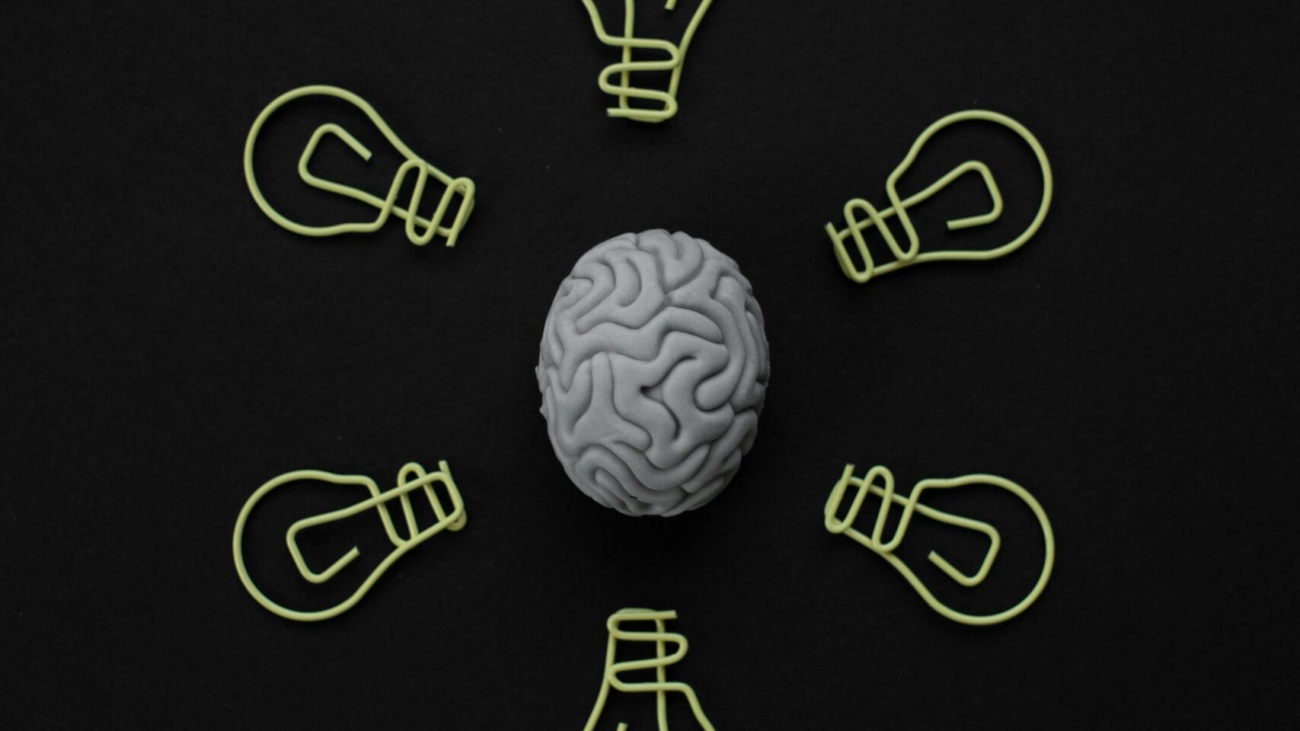Vitamin E is an essential nutrient that provides a wide range of health benefits. The nutrient also boasts antioxidant activity that protects cells from harm caused by free radicals. A free radical is a highly reactive and unstable molecule that may cause cellular damage and is known to be connected with advancing age and several diseases.
Vitamin E bears the burden of the damage, strengthening your defenses, skin, vision, heart, and even immune system since it is also involved in fighting against such damage. It assists in controlling inflammation and managing chronic illness.
Vitamin E resembles a body shield; it is a nutritional element that safeguards the body from exposure to various harmful materials that could lead to diseases in the future. Let us delve further into the different merits of Vitamin E and understand how it helps you lead a healthier life.
The Beneficial Health Aspects of Vitamin E
Antioxidative Activities: Cell Protection
The body constantly experiences oxidative stress, and Vitamin E acts as a powerful antioxidant that defends the body by neutralizing free radicals. These free radicals damage cells and tissue and can cause chronic illnesses such as heart disease, diabetes, and cancer. Vitamin E protects cellular structure from oxidative damage and inflammation, enhancing well-being.
Immune System Functions
An active and healthy immune system relies on Vitamin E. Vitamin E enables the immune cells to be more effective in warding off infection. In the absence of Vitamin E, several studies have demonstrated that the immune response becomes impaired, exposing the individual to several diseases.
Skin Benefits

Given its strong influence on appearance, vitamin E is often termed the beauty vitamin. Vitamin E helps maintain healthy, radiant, and youthful skin. It is widely incorporated into various cosmetic products because it helps heal scars, reduces the appearance of fine lines and wrinkles, and retains moisture in the skin.
Maintaining Healthy Eyes
Micronutrient Vitamin E is considered to be quite effective in protecting the eyes against aging and age-related diseases such as cataracts and macular degeneration. Macular degeneration and cataracts are common age-related problems. Nourishment in the form of Vitamin E protects retinal barrier vessels from free radical oxidative damage, allowing you to keep your eyesight intact for a long time.
Protection for the Heart
Most importantly, Vitamin E vitally supports heart health. Regarding blood pressure and cholesterol, it may be helpful in alleviating particular risk factors associated with heart disease. The upper value (the first number in a blood pressure reading) in the systolic blood pressure index of patients who took Vitamin E has decreased. In addition, it has also been linked with declining levels of LDL cholesterol and triglycerides, both responsible for heart diseases.
However, it should be cautioned that not all studies have yielded favorable results in this respect. According to the U.S. Preventive Services Task Force, Vitamin E’s efficacy in preventing cardiovascular disease is further emphasized. However, it does not benefit heart disease or associated mortality reduction.
Liver Health
Vitamin E may also aid in enhancing liver conditions, with a particular focus on non-alcoholic fatty liver disease (NAFLD). NAFLD is described as a condition where there exists an excess accumulation of fat within the human liver of alcoholics. Studies have shown that liver inflammation and function were improved by administering vitamin E supplements. An evaluation published in 2021 indicates that in people with NAFLD, the consumption of vitamin E has been associated with lower levels of liver enzymes, which is an indicator of liver damage.
Reduce menstrual pain
Vitamin E may provide some assistance for women suffering from painful muscular cramps (dysmenorrhea). Several studies have demonstrated that vitamin E may alleviate the symptoms associated with menstrual pain, such as dysmenorrhea. Women participating in the study who consumed a 200-IU dose of Vitamin E reported less pain during their menstruation, with the level of pain highest in women taking a placebo. The positive effect was also evident for vitamin E and omega-3 combined supplements.
Vitamin E’s Role in Supporting the Immune System
Vitamin E in Defense of the Immune System A robust immune system is vital for the human body’s defense against invading cells such as viruses and bacteria. When Vitamin E is consumed, it promotes immune response by increasing the proliferation and activity of immune cells such as T-cells and natural killer cells. Thus, Vitamin E is an essential nutrient for preventing illnesses and promoting optimal health.
The Role of Vitamin E in Skin Care
Most cosmetic preparations contain vitamin E, thanks to its distinctive property of restoring damaged skin. Vitamin E smoothens and hydrates the skin, making it soft and flexible. Furthermore, it helps to diminish the appearance of scars and dark spots resulting from acne or other skin disorders.
Vitamin E will also help reduce the appearance of wrinkles and fine lines for these individuals. It is essential for skin revitalization and maintenance, as it replenishes the skin’s nutrients. Furthermore, Vitamin E may also assist in wound healing by reducing damage and scarring.
Vitamin E’s Role in Supporting the Immune System
The immune system helps the body withstand disease, parasites, and invaders. Vitamin E acts as an immunomodulating vitamin by promoting the synthesis and activity of immunocompetent cells such as T-cells and natural killer cells. This solidifies Vitamin E’s role in preventing disease and maintaining health.
Vitamin E from Natural Sources

Getting a sufficient level of Vitamin E doesn’t mean consuming only supplements. An adequate amount of these essential nutrients can be obtained from natural sources. Let us examine the vitamin E-containing foods according to the nutrition categories as an example:
Nuts and seeds:
- Almonds contain vitamin E, are great for snacking, and can easily be incorporated into various dishes.
- Sunflower seeds: These seeds are a good source of vitamin E, and they also contain healthy fats and proteins.
- Hazelnuts: These nuts are another excellent vitamin E source for snacking or baked products.
- Vegetable oils:
- Sunflower oil readily applies to many cooking or salads and is rich in vitamin E.
- Wheat germ oil: Wheat germ oil is among the highest in vitamin E and can be drizzled on dishes or blended into smoothies. It is also one of the thickest and richest oils.
- Olive oil: Generally regarded as one of the good oils for health due to beneficial fatty acids, olive oil also contains vitamin E in appreciable amounts, especially in extra virgin form.
Leafy greens:
- Spinach: Sufficient in Vitamin E, it can be consumed raw or added to salads, soups, or smoothies.
- Swiss Chard: Swiss chard is also a rich source of vitamins and other nutrients, such as potassium and magnesium.
- Fruits:
- Avocados: While avocados are known for their healthy fats, they are also abundant in Vitamin E, making them a beneficial ingredient in one’s diet.
- Kiwis: Among the fruits, Kiwis are packed with Vitamin E, vitamin C, and other antioxidants, making them a healthy addition to your diet as a snack or pizza salad.
Fortified Foods:
- Fortified Cereals: Some cereals are supplemented with Vitamin E for people who cannot consume adequate amounts of natural vitamin-rich foods, making their lives easier.
- Fortified Juices: On the same note, certain juices, like orange juices, can be fortified with Vitamin E for additional vitamin E intake.
After all, incorporating these natural sources of Vitamin E in your meals is a great way to ensure that you can meet the required amount of this vitamin for optimal health. Through nuts, oils, greens, berries, capsules, or fortified foods, there is no doubt that the diverse options available make it easy to consume Vitamin E as a supplement in food intake of enough nutritional composition.
Ways to Increase Vitamin E Intake
Vitamin E is easy to incorporate into the diet and very tasty. Take a look at these suggestions to increase your consumption:
- Take a few nuts, such as almonds or sunflower seeds, as a snack.
- Also, add a few oil-based products, such as olive or sunflower, to your diet.
- You can have extra nutrients like leafy greens in your salads or smoothies.
- Try to consume vitamin E-rich foods such as avocados and kiwis.
All these simple techniques can help achieve the target of the daily vitamin E requirement without too much difficulty.
How much Vitamin E you need daily depends on age, gender, and life stage, e.g., pregnancy and breastfeeding. Thus, knowing the recommended daily allowance is paramount in such situations, as one must strive to obtain an adequate amount of this essential nutrient to achieve health and avoid deficiency.
Recommended daily intake by age and gender:
- Infants
- 0-6 months: 4 milligrams (6 IU)
- 7-12 months: 5 milligrams (7.5 IU)
- Children 1-3: 6 milligrams (9 IU)
- 4-8: 7 milligrams, or 10.4 IU
- 9-13: 11 mg of vitamin E (16.4 IU)
- Teens: 14-18: 15 mg (22.4 IU)
- Adults: 19 years and older: 15 mg (22.4 IU)
- Pregnant women: 15 mg (22.4 IU)
- Breastfeeding women: 19 mg (28.4 IU)
Vitamin E Requirements During Pregnancy And While Breastfeeding
Pregnancy and the stages of nurturing a young baby are critical periods in a woman’s life, and with this come various physiological changes that augment the level of several nutrients, among them Vitamin E. Vitamin E is essential in providing immaculate support to the growing infant’s immune system and appropriate growth. Here’s what you ought to know:
In consecutive order, pregnant women should take normal (15 mg of vitamin E) or 22.4 IU a day.
Breastfeeding women also have slightly elevated intake levels at 19 mg, or 28.4 IU, to allow for maternal and infant welfare.
Such increased levels are necessary to enhance mother and baby health and optimal growth and development in the crucial stages.
Can You Ever Overdo Vitamin E?

Vitamin E can be beneficial when taken adequately, but excessive use can be harmful. If too much vitamin E is consumed, it may cause clotting disorders as it has blood-thinning properties. Therefore, it is advisable to adhere to the daily recommended amount and consult with a physician before taking extra doses of vitamin E.
Who Should Use Vitamin E Supplements?
Dietary supplements can be a viable alternative for those who do not obtain enough vitamin E. Vitamin E dietary supplements can be found in both natural and artificial forms. As a rule of thumb, natural vitamin E is believed to be more effective and easily absorbed by the body.
Before taking any supplement, it is advisable to consult a physician, particularly if the patient suffers from certain diseases or is under medication. Medical professionals advise against excessive use of vitamin E supplements due to potential health risks associated with overdependence.
Choosing the Right Vitamin E Supplement
Naturally, when purchasing a vitamin E supplement, never go for supplements that contain synthetic vitamin E (dl-alpha-tocopherol), but instead, always buy those that have all-natural vitamin E (d-alpha-tocopherol). Check the dosage and, of course, your health needs so as not to overuse the supplement. Be sure to select the supplement from a reputable manufacturer with many positive comments and high-quality components.
Vitamin E in Skincare Products

Vitamin E is a cosmetic skincare ingredient used mainly in moisturizers and anti-aging creams. Vitamin E aids in diminishing the insertion of wrinkles, fine lines, and skin discoloration, as well as supporting the skin. Moreover, it is a natural moisturizer, ensuring the skin remains supple.
Homemade Essential Remedies Vitamin E
For those who go the natural route in skincare, there is, from time to time, no easier way than using Vitamin E oil. Take vitamin E oil and dab it on your skin, or blend it with other oils, such as coconut oil. This home remedy will help hydrate the skin, minimize eczema scars, and ensure it retains its youthful look.
Possibly Effective Uses of Vitamin E
Alzheimer’s Disease
In patients who already have Alzheimer’s, using vitamin E along with anti-Alzheimer medications can be helpful as it can help in reducing memory loss and improving cognitive interaction. It does not, however, preclude the condition from progressing.
Blood Disorder: Beta-thalassemia
Vitamin E has been helpful in children suffering from beta thalassemia, a blood illness responsible for reduced hemoglobin levels. Supplementation helps optimize the function of red blood cells.
Dysmenorrhea
Some women have experienced improved cramping after taking Vitamin E two days before menstruation and during the first three days of the cycle, reducing menstrual blood loss.
Vitamin E Deficiency

Vitamin E deficiency is uncommon in the general population but can occur in suboptimal diets. Individuals in life-changing situations, such as Crohn’s or cystic fibrosis, might also cause damage.
Symptoms of Deficiency
Muscle weakness, problems with vision, and impaired immune functioning may suggest a vitamin E deficiency. Any such manifestations should be treated in a primary care setting.
Signs of Vitamin E Deficiency That You Should Be Aware Of
The insufficiency of Vitamin E will also start revealing itself with some signs over time. The signs can be mild or severe depending on the deficiency level of vitamin E in the body systems. These are the signs to look for; however, some people may not experience all of these signs:
- Weakness of muscles: Vitamin E is considered helpful in fighting oxidative stress, which is sustained within muscles and involves cellular reconstruction. A deficiency can cause muscle weakness, which can, in turn, make simple activities like walking or lifting things strenuous. In extreme, more serious instances, these people may undergo muscle wasting or atrophy.
- Eye problems: Vitamin E is vital to redistributing blood to the retina and preventing the deterioration of tissues within muscles and the organs within the eye. Those with a vitamin E deficiency are likely to have eye issues, such as seeing unclear things or struggling with vision in darkness. In extreme circumstances, the deficiency will cause retinopathy, which a lack of vitamin E can cause.
- Weakened Immune System: In this regard, vitamin E is crucial as it combats free radical-damaged cells and also assists in producing immune cells. With insufficient amounts of vitamin E, the individual’s chances of avoiding infections can be reduced, making them more vulnerable to diseases.
- Fatigue and Tiredness: Vitamin E deficiency can prompt lasting tiredness or chronic fatigue that persists even after a night’s sleep. This happens due to the body’s low metabolism of available energy resources and the high oxidative stress levels within the cells.
- Tingling Sensation (Neuropathy): Vitamin E is essential for the nerves, and nerves lacking this vitamin may suffer neuropathy that produces tingling, numbness, or a pins and needles sensation in the feet, hands, arms, or legs. Such deficiency can be an indication of nerve damage sustaining the deficiency.
- Coordination Problems (Ataxia): Vitamin E is involved with the functioning of the nervous system and is particularly important for task-oriented coordination. Its deficiency can also lead to ataxia, causing the individual to have low balance and coordination, making it difficult to walk, stand, or perform various other strain-free tasks.
- Skin Issues: Vitamin E is a powerful antioxidant that helps combat skin damage caused by UV rays and environmental factors such as pollution. If the skin lacks vitamin E, it will likely be dry, rough, or flaky. Low vitamin E levels may also aggravate dry skin due to eczema and psoriasis.
- Heart and Respiratory Problems: In cases of severe deficiency, heart problems can occur, such as cardiomyopathy—a condition when the heart muscles are weakened—and respiratory problems due to the disturbance of oxygen transport. This means more risk for shortness of breath and increased risk for infections or lung pneumonia.
The link between Vitamin E and heart health
Studies show vitamin E benefits the heart as it decreases the chances of contracting coronary heart disease, which can be caused by atherosclerosis, which leads to inflammation. Vitamin E is effective against oxidative stress, which leads to heart diseases.
The link between Vitamin E and blood cholesterol levels
Vitamin E can potentially improve cholesterol levels by decreasing bad (LDL) and raising good (HDL) cholesterol levels. By keeping blood vessels healthy, it helps to prevent and control the risk of heart disease.
Clinical trials have shown several health benefits, including normalizing blood pressure, lowering cholesterol, and preventing skin cancer associated with vitamin E. It may be helpful to cite the recommended foods to include during education: spinach, broccoli, olives, soybeans, peanuts, and, most importantly, avocados. Vitamin E is generally very safe to consume and, at most, can be damaging in excess, a rare instance during regular consumption. In essence, vitamin E is a vitamin responsible for multiple functions, including being an antioxidant and helping cell membranes.
Why wait if you can immediately start to include vitamin E-containing foods in your meals? If you believe you require a supplement, consult your doctor, and please leave your experiences with Vitamin E in the comments section below!
What is the best source of Vitamin E?
The best sources include nuts, seeds, vegetable oils, leafy greens, and fruits like avocados.
Can Vitamin E help with skin problems?
Yes, its antioxidant properties can help treat skin issues like eczema, acne, and scars.
What is the optimal dosage for Vitamin E in one day?
The average recommended amount is 15 mg (22.4 IU), which should also be increased in cases of pregnant and lactating women.
Does Vitamin E have any effect on the growth of hair?
Vitamin E enhances blood circulation to the scalp region and may aid in more robust hair growth.
Could I have too much vitamin E from food sources?
It is rare to have too much from food sources, but too many vitamins taken in supplements may cause toxicity.
[elementor-template id=”480″]References
Lee G.Y., Han S.N. Vitamin E and Immunity, in ‘Nutrients,’ 2018, 10, 1614. doi: 10.3390/nu10111614. – DOI – PMC – PubMed
Traber M.G., Head B. Vitamin E: How much is too much and why! Free Radic. Biol. Med. 2021; 177: 212–225. doi: 10.1016/j.freeradbiomed.2021.10.028. – DOI – PubMed
U.S. Department of Agriculture, Agricultural Research Service. FoodData Central External Link Disclaimer. U.S. Department of Agriculture, Agricultural Research Service; Washington, DC, USA: 2019.
Disclaimer:
At Medikiaa Health Publishing, we offer our readers access to a collection of archived materials. Please be sure to check the date of the last review or update for each article. Remember, the information on this site, no matter how recent, should never replace the personalized medical advice from your doctor or another qualified healthcare professional.












































